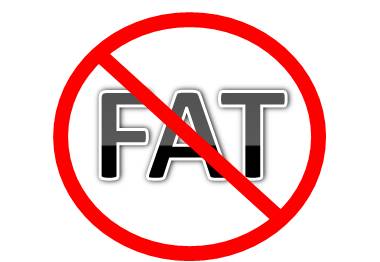Insulin Resistance – Why You Can’t Lose Weight
 For many years, scientists and nutritionists have preached that weight loss comes down to a simple equation: kilojoules in versus kilojoules out.
For many years, scientists and nutritionists have preached that weight loss comes down to a simple equation: kilojoules in versus kilojoules out.
Insulin resistance is a hormonal issue and may be the reason the scales aren’t shifting.
While this principle is true to an extent, there are a number of increasingly common hormonal shifts that can alter this relationship.
Insulin resistance, the clinical condition that precedes Type 2 Diabetes, is one such diagnosis.
Individuals with insulin resistance will struggle to lose weight via traditional weight loss programs simply because their body is not burning fuel the way it should be.
What Is Insulin Resistance?
It is the beginning of the body not dealing well with sugar (and remember that all carbohydrate breaks down into sugar in our bodies).
One of insulin’s main jobs is to get certain body cells to “open up” to take in glucose (or, more accurately to store the glucose as fat).
Insulin resistance happens when the cells essentially don’t open the door when insulin comes knocking.
When this happens, the body puts out more insulin to stabilise blood glucose (and so the cells can use the glucose).
Over time, this results in a condition called “hyperinsulinemia” or “too much insulin in the blood”. Hyperinsulinemia causes other problems, including making it more difficult for the body to use stored fat for energy.
What Causes Insulin Resistance?
We don’t know the whole story, but certainly genetics plays a big part. Some people are actually born insulin resistant.
 Some known causes are:
Some known causes are:
- Smoking
- Inflammation
- Too much sugar in the diet
- Too much fructose in the diet
- Too much trans fats in the diet
- Vitamin D Deficiency
- Birth control pill
Lack of physical activity causes the cells to be less responsive to insulin. Most experts agree that obesity leads to more insulin resistance.
However, it almost certainly also works the other way around: Insulin resistance promotes weight gain.
So a vicious cycle can be set up with insulin resistance promoting weight gain, which promotes more insulin resistance.
What Problems Do Insulin Resistance Cause?
Besides general weight gain, insulin resistance is associated with:
- Abdominal obesity
- Heart disease
- PCOS
- Breast and prostate cancer
- Premature ageing
- Acne
- High blood pressure
- High triglycerides
- Low HDL (“good cholesterol”)
These conditions are part of a constellation of problems called metabolic syndrome (also called insulin resistance syndrome).
Because this group of symptoms occurs together, it’s hard to know what causes what, but metabolic syndrome is a risk factor for heart disease and Type 2 diabetes.
 How Common is Insulin Resistance?
How Common is Insulin Resistance?
Unfortunately insulin resistance is becoming more common. As many as 25% of Australians may suffer from this underlying problem of insulin resistance.
Most are not aware that they have it. It also increases with age, which could be related to the tendency to gain weight in midlife.
Am I Insulin Resistant?
If you are overweight, you are more likely to be insulin resistant, especially if you are carrying extra weight in your belly.
Ask yourself this very important question: “Are you a pre-diabetic?” Here are some warning signs:
- Fasting glucose greater than 5.0 mmol/L (the official reference range is 3.5-6.0)
- Elevated triglycerides and bad cholesterol (LDL)
- Elevated ALT on liver function test
- Waist measure greater than 80cm for women and 90cm for men
- High blood pressure
The definitive pathology test for insulin resistance is the Glucose Tolerance Test (GTT) with insulin. One hour after the glucose load, normal insulin should be less than 60mU/L.
Other useful tests include fasting insulin, fasting glucose, liver function test, lipid profile, C-RP, thyroid function and serum vitamin D.
Additionally, people who respond well to reduced carbohydrate diets may be more likely to be insulin resistant.
 Next Stop, Diabetes.
Next Stop, Diabetes.
If the pancreas keeps having to put out high levels of insulin, eventually it can’t keep doing it.
The common explanation is that the beta-cells in the pancreas become “exhausted,” but it actually may be that the high insulin and/or even slightly higher blood glucose starts to do damage to the beta cells.
In any case, at that point, blood glucose starts to rise even more, and the path towards Type 2 diabetes is truly begun.
When fasting blood glucose reaches 100 mg/dl, it is called “pre-diabetes,” and when it reaches 126, it is called “diabetes.”
You can see that these are invisible lines along a path of increasing inability for the body to deal with sugar: First, insulin is less effective, and then not enough insulin is available to do the job.
The sooner we can intervene in this process, the better off we will be.
Changing Your Health Future
The good news is that insulin resistance is reversible with diet and lifestyle.
1. Reduce carbohydrates – especially fructose sweeteners. During the first couple of months of treatment, carbohydrate intake should be less than 50 grams per day.
With a diet of meat and salad vegetables, this is not difficult. An average serving of broccoli, for example, contains only 13 grams of carbohydrate.
Compare this to a serving of pasta, which contains over 40 grams of carbohydrate, or to refined sugar, the worst carbohydrate.
A small can of soft drink contains at least 40 grams of carbohydrate. If you are addicted to a sweet taste, you can try the herbal sweetener Stevia, which has the added benefit of improving insulin sensitivity.
2. Eliminate Refined Sugar – Cut all refined sugar out of your diet. Sugar is the worst kind of carbohydrate.
Click here to learn how to quit sugar in 5 simple steps.
3. Eat Protein regularly – Protein curbs the release of insulin and stimulates the production of the hormone glucagon, which opposes insulin. Good sources include: 2 eggs (12 grams protein), 1 chicken breast (25 grams protein), 2 lamb chops (29 grams protein), 25 grams whey protein (23 grams protein).
Click Here to find out how increasing your protein can aid weight loss.
 4. Avoid Trans fat. Eliminate soy oil, corn oil, cottonseed oil or any generic “vegetable oil”. Particularly bad are margarine, vegetable oil spreads and deep-fried food.
4. Avoid Trans fat. Eliminate soy oil, corn oil, cottonseed oil or any generic “vegetable oil”. Particularly bad are margarine, vegetable oil spreads and deep-fried food.
Eat only naturally occurring fats such as butter, avocado, olive oil, coconut milk, meat, fish, and nuts and seeds.
It can take up to 6 months to give your cell membranes an “oil change”.
5. Exercise – Strength training dramatically improves insulin sensitivity. When the muscles increase their energy expenditure, they re-learn how to use carbohydrates rather than store them.
Weight loss occurs not simply because of the calories burned, but because of a shift in metabolism.
Exercise is also effective to relieve stress, a common cause of inflammation and insulin resistance.
6. Avoid Wheat – Gluten generates inflammation and disrupts the insulin receptor, thereby worsening insulin resistance.
Avoid flour-containing bread, pasta, cereal, and biscuits. If you do have flour, choose flour made from rice, oats, barley, spelt, and rye. Ordinary “flour” is wheat.
Click here for some yummy gluten free recipes.
7. Adapt A Mediterranean Diet – Newly diagnosed diabetics can reduce their need for medication by following the Mediterranean diet.
Click here to learn more about the Mediterranean Diet.
8. Nutritional supplements and herbs – If you need some help in controlling your sugar cravings, chromium, magnesium, selenium and omega 3 fatty acids will improve insulin’s effectiveness at the cell membrane.
B-vitamins and amino acids assist the liver to remove pollutants. Antioxidants such as vitamin C and vitamin E will act as natural anti-inflammatories.
Gymnema and Bitter Melon have been documented to improve insulin sensitivity. Vitamin D should be supplemented once a deficiency has been determined on blood test.
Eagle Gluco Support combines Gymnema, Cinnamon and Chromium to provide blood sugar support and regulation.
9. Correct Gut flora – Friendly bacteria in the intestine assist with weight loss. Changing the gut flora may improve insulin sensitivity and promote weight loss.
Intestinal flora is negatively affected by junk-food diet, antibiotics and Pill use. Click here for Emeds Best Probiotics.
10. Talk to your Emed Practitioner today – If you don’t know where to start, book an E-Consult with your Emed Practitioner for a tailored treatment plan.
Further Reading:






